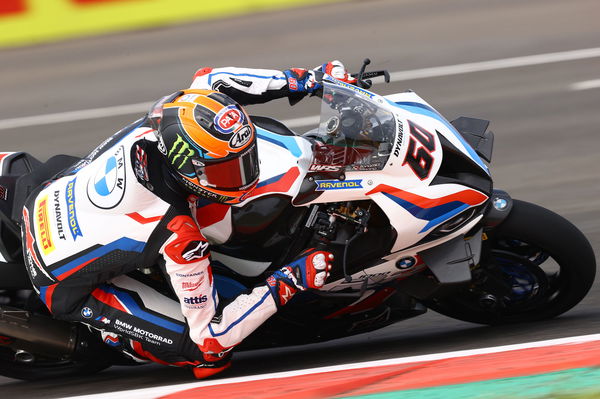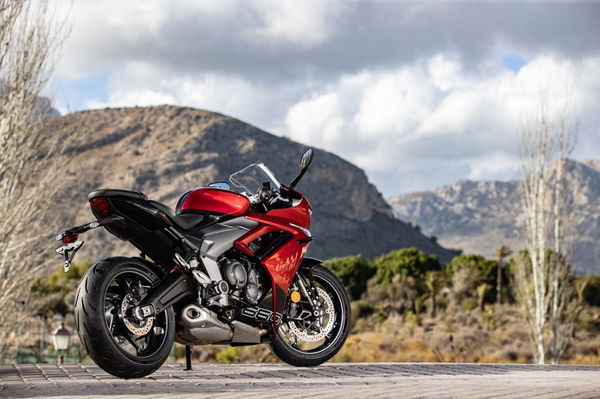Overhauled WorldSSP regs add six models to homologation list, includes Triumph
FIM confirms which motorcycles are eligible to compete in the 2022 WorldSSP Championship, adding new models from Triumph, Ducati and two from MV Agusta
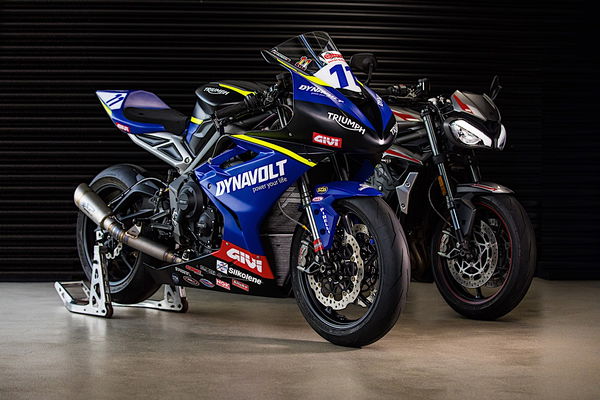
A total of 12 different motorcycle models will now be eligible for entry into the 2022 WorldSSP Championship following an overhaul of the regulations, double that of the previous season.
After a period of decline for the so-called middleweight sportbike class commercially, the WorldSSP Championship has persevered in recent years with a large field of mostly Yamaha R6s, with a handful of Kawasaki ZX-6Rs and one or two factory MV Agusta F3 675s.
However, MV Agusta has made it clear it only keeps the F3 675 on its price lists to ensure its WorldSSP entry - the Italian firm preferring to push its 800 variant - and the Yamaha R6 removed off mainstream sale in favour of the track-only RACE version, while the ageing Kawasaki ZX-6R has even been removed from some model line-ups, including the UK, though there remains stock available.
As for the other three models that could still be homologated, the Honda CBR600RR and Suzuki GSX-R600 receive no factory interest as they are no longer sold in Europe, while the Triumph Daytona 675R went out of production some years ago.
In reaction to this, the FIM has fettled the existing rules to allow larger engine motorcycles with alternative configurations into the fray from 2022. In layman’s terms, the FIM caps the engine capacity for each configuration - twin, triple and four-cylinder - to ensure balance of performance, but these limits have been raised across the board.
Though the finer details haven’t been officially communicated, it means models with a twin-cylinder engine up to 960cc can compete, with triple-cylinder engines capped at least 800cc and four-cylinder at least 636cc.
The changes mean six motorcycles have been added to the homologation acceptability list under the term ‘Supersport Next Generation’, though the manner in which Balance of Performance - a disparity in the rev limits - is retained remains in flux [see further down].
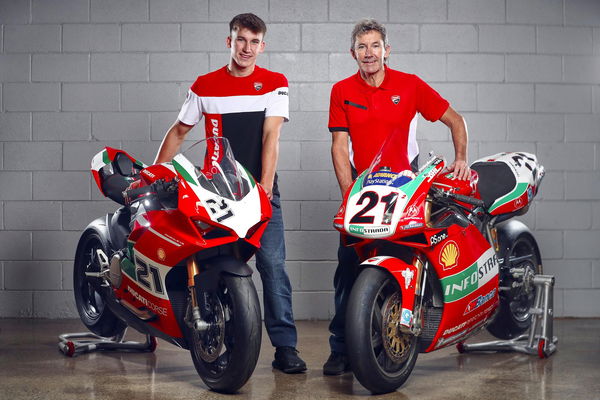
Which six motorcycles can now compete in WorldSSP?
By expanding the margins, it means at least two motorcycles are confirmed to be debuting in the 2022 WorldSSP Championship - the Ducati Panigale V2 and MV Agusta F3 800 - but the most interesting addition is what has been labelled as the Triumph ST765R.
The name clearly stands for ‘Street Triple 765 R’ and confirms that the model - which is a faired version of the naked motorcycle - has been given homologation status.
This is significant because previous WorldSSP regulations wouldn’t have considered the Street Triple because it is a naked and while the addition of a fairing in the style of a Daytona - which is no longer on sale - this isn’t an exact model that is available to the public.
As such, the FIM has clearly bent the erstwhile rules to accept the homologation criteria of its Street Triple base, rather than the finished version, something that could potentially transform the class if other manufacturers consider a similar approach with its own naked models.
The model in question competed in the British Supersport Championship as a pilot project to determine whether Balance of Performance could be achieved against Yamaha and Kawasaki, Triumph going on to win two races with Kyle Smith.
Though Triumph hasn’t officially confirmed it will be competing in WorldSSP next year, its operation team - former Honda WorldSSP representatives - Performance Technical Racing (PTR) have indicated it plans to run a pair of factory ST765Rs on the international stage.
Ducati, meanwhile, will have its WorldSBK factory effort Feel Racing - better known as Aruba.it Racing - enter a V2 for Nicolo Beluga, Barni Racing will run Oli Bayliss, while satellite outfits CM Racing and Althea Racing have Max Kofler and Federico Caricasulo competing.
Meanwhile, MV Agusta will upgrade the F3 800 and run Niki Tuuli and Bhattain Sofuoglu - cousin of five-time WorldSSP champion Kenan Sofuoglu.
Interestingly, the new regulations allow for a third MV Agusta model to be homologated in the Superveloce 800. Based on the F3, the cafe racer style model would certainly cut a retro dash on the grid, but it remains to be seen whether a team would be tempted to try it - it would guarantee plenty of airtime for its sponsors though.
Finally, the relaxing of the regulations means the Suzuki GSX-R750 is also eligible to compete, though like the GSX-R600 it isn’t sold in Europe and is more likely reserved for MotoAmerica, which is likely to adopt a similar regulatory process as the world championship.
Finally, the most recent 636cc version of the Kawasaki ZX-6R has been homologated for the first time, up from the existing 600cc model, despite its relative age versus its rivals.
| 2022 WorldSSP Homologation and Rev Limits | ||
| Motorcycle | Type | Rev Limit |
| Ducati Panigale V2 | 2cy 955cc | 11,xxx rpm |
| Honda CBR600RR | 4cy 600cc | 16,400 rpm |
| Kawasaki ZX-6R | 4cy 600cc | 16,400 rpm |
| Kawasaki ZX-636R | 4cy 636cc | 16,xxx rpm |
| MV Agusta F3 675 | 3cy 675cc | 15,800 rpm |
| MV Agusta F3 800 | 3cy 800cc | 14,xxx rpm |
| MV Agusta F3 Superveloce | 3cy 800cc | 14,xxx rpm |
| Suzuki GSX-R600 | 4cy 600cc | 16,400 rpm |
| Suzuki GSX-R750 | 4cy 750cc | xx,xxx rpm |
| Triumph 675R (Daytona) | 3cy 675cc | 15,500 rpm |
| Triumphn ST765R | 3cy 675cc | 14,xxx rpm |
| Yamaha YZF-R6 | 4cy 600cc | 16,400 rpm |
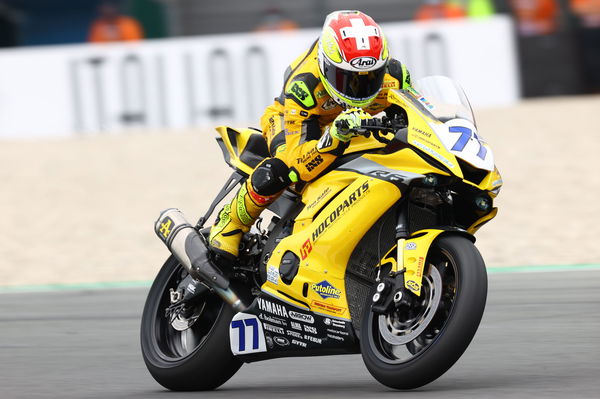
What will Yamaha and Kawasaki do?
It is fair to say Ducati has immediately pounced on the change with at least four entries of its mid-size sportsbike, which will mark its first racing twin since the WorldSBK 1198 Panigale was superseded by the Panigale V4 in 2019.
Triumph aside, Ducati has been the big beneficiary for the changes and many are cynically suggesting the FIM have gone too far in changing the rules to assure Ducati’s involvement in a manner not dissimilar to the furore around the decision to raise the WorldSBK capacity limit above 1000cc in 2008 to stop Ducati from quitting after it launched the 1098R.
This is something that has reportedly frustrated Yamaha, which is seeing its dominance under threat fearing its R6 will struggle against a bigger rival, despite having two more cylinders.
Moreover, with the R6 being taken off sale, replaced spiritually by the larger engine but decidedly warmer R7, Yamaha doesn’t have an obvious successor for its mid-range sportsbike despite its dominance in recent years.
One option on the table is launching a Yamaha R9, a model that is anticipated after the Iwata firm trademarked its name a few months ago. However, it appears Yamaha might have made a misstep here since the model it will be based on - the MT-09 - now comes with an 890cc triple-cylinder engine.
While the erstwhile 849cc triple-cylinder might have fallen within the engine size cap - or would have probably been adjusted to allow it - an 890cc triple-cylinder will be seen by the likes of Triumph and MV Agusta as simply too large and potentially too powerful.
It remains to be seen whether Yamaha will pin it back to a smaller size - like Ducati did with the Panigale V4 R since the V4 S exceeds WorldSBK engine regulations - but this would make questionable commercial sense for a volume model.
As for Kawasaki, there have been numerous rumours about a successor for the ZX-6R, but it has gone quiet on this front amid talk of a Kawasaki ZX-4R being developed instead.
